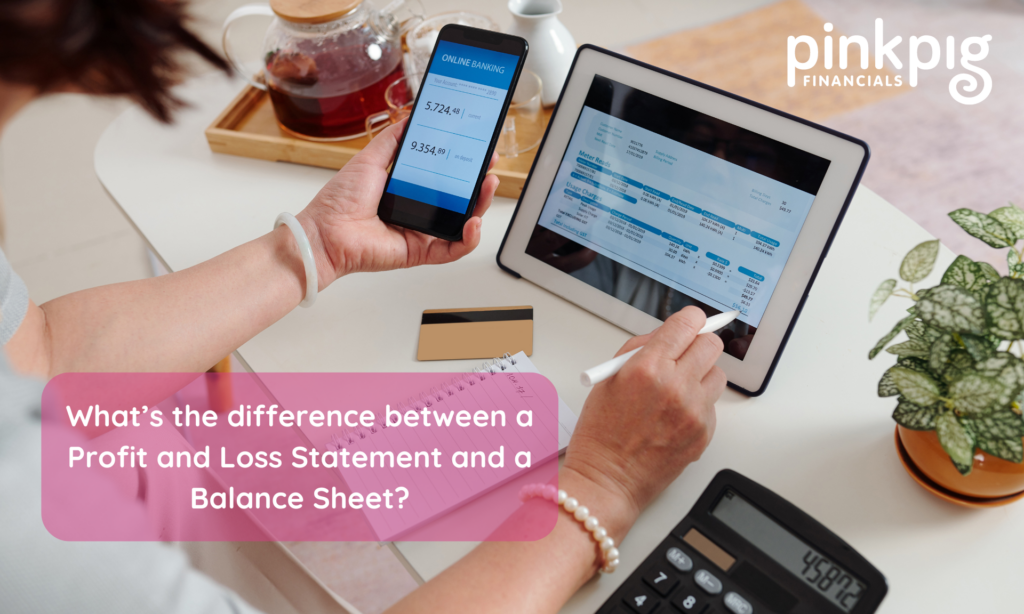Financial statements are essential tools for understanding a business’s financial health and performance. Two key financial statements are the Profit and Loss Statement (P&L) and the Balance Sheet.
Knowing the difference between these statements helps assess a company’s profitability, liquidity, and overall financial position.
In this article, we’ll explore what these statements are, their components, and how they aid in making informed business decisions.
What is a Profit and Loss Statement (P&L)
The Profit and Loss Statement (P&L) is like a report card for a business’s earnings. It shows how much money came in (revenue) and how much went out (expenses), ultimately revealing whether the company made a profit or a loss.
Components of a P&L Statement
The P&L includes:
- Revenue: Money earned from sales
- Cost of Goods Sold (COGS): Expenses directly related to producing goods or services
- Gross Profit: Revenue minus COGS
- Operating Expenses: Costs related to running the business
- Net Income: Gross profit minus operating expenses
Importance of P&L Analysis
Analysing the P&L helps assess a company’s efficiency, profitability, and overall financial health. It provides insights into how well the business is performing.
What is a Balance Sheet?
The Balance Sheet provides a snapshot of a company’s financial standing at a specific point in time. It shows what the company owns (assets), what it owes (liabilities), and the owner’s equity.
Structure of a Balance Sheet
The Balance Sheet is divided into:
- Assets: Cash, inventory, property
- Liabilities: Debts, payables
- Equity: The owner’s stake in the company
Key Categories in a Balance Sheet
Assets, liabilities, and equity together paint a clear picture of a company’s resources and obligations.
Key Differences Between P&L and Balance Sheet
Understanding the difference between the P&L and Balance Sheet is crucial for grasping a company’s financial health.
- Definition and Purpose: The P&L focuses on a company’s revenue, expenses, and profitability over a specific period, while the Balance Sheet provides a snapshot of a company’s assets, liabilities, and equity at a particular point in time.
- Time Frame and Content: The P&L shows financial performance over a set period (e.g., a month or year), while the Balance Sheet gives a snapshot of financial position at a specific date.
Importance of P&L and Balance Sheet when it comes to understanding your numbers
Both the P&L and Balance Sheet are vital for assessing business performance and making informed decisions.
Role in Assessing Business Performance
- The P&L helps evaluate how well a company generates profits.
- The Balance Sheet highlights a company’s assets, liabilities, and equity, giving insights into its financial stability and liquidity.
Utilising Both Statements for Decision Making
Analysing both statements helps businesses make decisions about pricing strategies, cost control, investments, and financial planning.
Interpreting Financial Performance Using P&L and Balance Sheet
Understanding how the P&L and Balance Sheet complement each other provides a comprehensive view of a company’s financial health.
Comparative Analysis Techniques
- Comparing historical P&L statements reveals trends in revenue and expenses.
- Analysing changes in the Balance Sheet over time uncovers shifts in assets, liabilities, and equity.
Identifying Trends and Patterns
Examining financial data trends from both statements helps businesses anticipate future performance and make strategic decisions.
By mastering the interpretation of P&L and Balance Sheets, businesses can make informed strategic decisions, identify areas for improvement, and maintain financial stability. These financial tools are essential for navigating the complexities of the financial landscape with confidence.
Frequently Asked Questions
- What is the main difference between a Profit and Loss Statement and a Balance Sheet?
- The P&L shows profitability over a period, while the Balance Sheet provides a snapshot of financial position at a specific point in time.
- How often are Profit and Loss Statements and Balance Sheets typically prepared?
- These statements are usually prepared monthly, quarterly, and annually.
- Can a company have a strong Balance Sheet but a weak Profit and Loss Statement, and vice versa?
- Yes, a company might have substantial assets and low liabilities but still incur losses, and vice versa.
- How can small business owners use P&L and Balance Sheet analysis to improve their financial performance?
- By analysing these statements, small business owners can identify cost-saving opportunities, manage cash flow, and make informed decisions about investments and growth.
Need help with your accounts?
Our team is here to help transform your finances so you can spend more time on what matters most.
We take the stress out of your accounts, maximise your time, and provide the expert guidance you need to reach your goals.
Complete our Quick Questionnaire and we’ll be in touch to book a Discovery call shortly.
Looking for some tax tips and advice? Check out PPF on YouTube!

